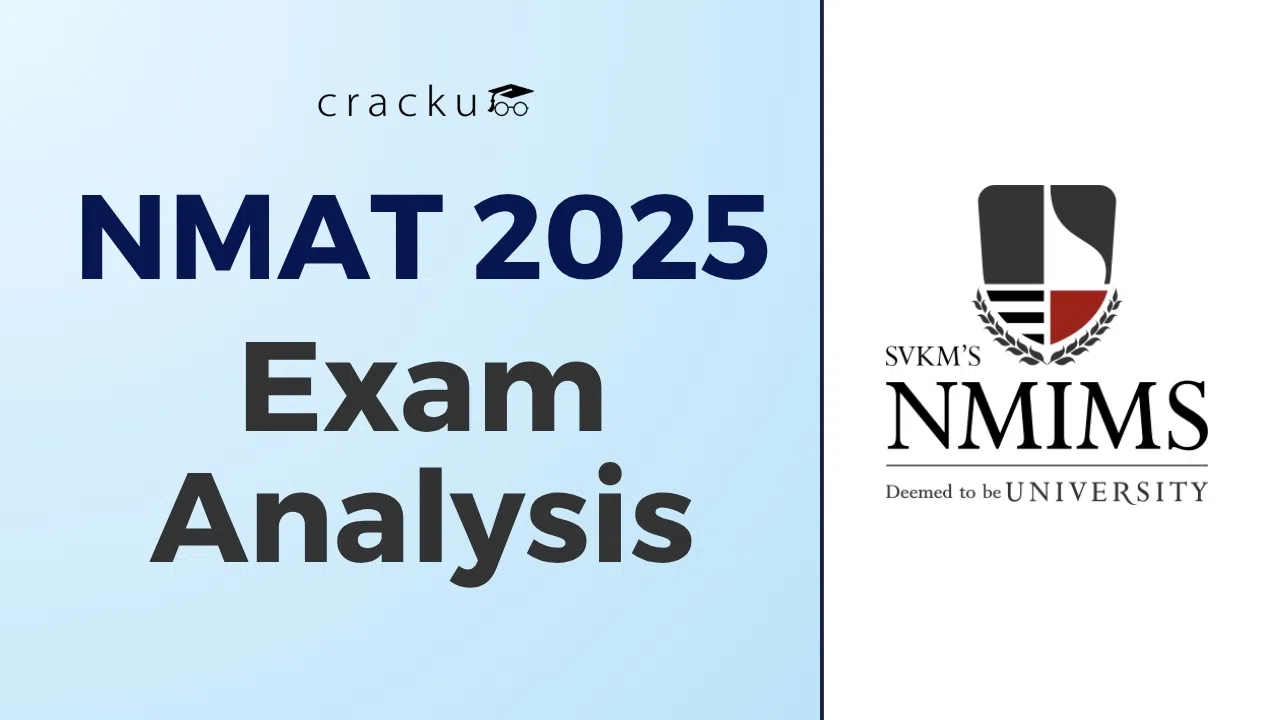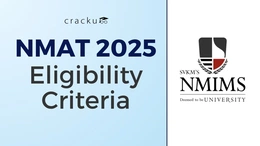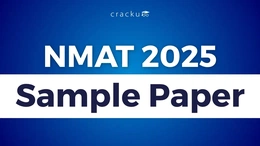NMAT Exam Analysis 2025: NMAT 2025 exam was rated to be of moderate difficulty. The Quantitative Skills section stands out as the most difficult and time-consuming. The Logical Reasoning was moderately difficult, and Language Skills was the most straightforward, as RCs were short and doable. Overall, the exam was consistent with practice exams in an adaptive format. A score of 230-240+ will be a good score for top MBA colleges like NMIMS Mumbai, XIM Bhubaneswar, and K J Somaiya.
NMAT Exam Analysis 2025
There was no change in the exam pattern. It had 3 sections on Language Skills, Logical Reasoning, and Quantitative Skills. The table below contains the NMAT 2025 exam overview:
Particulars | Details |
Conducting Body | Graduate Management Admission Council (GMAC) |
Exam Mode | Computer-based / Online |
Exam Window | November 5 – December 19, 2025 |
Total Questions | 108 |
Total Duration | 120 minutes |
Sections | Language Skills, Logical Reasoning, Quantitative Skills |
Sectional Time Limit | Yes |
Marking Scheme | No negative marking |
Score Range | 36 – 360 |
Exam Type | Adaptive (difficulty changes based on performance) |
Also Read, NMAT Previous Year Papers With Solutions PDF, Download Now
NMAT Exam Analysis (9th November 2025)
Sayali Ma’am scored 334 / 360 this time (vs. 292 last time).
According to her:
-
Critical Reasoning (Logical Reasoning) was much easier than expected.
-
Quantitative section was at par with her last attempt.
-
Verbal was easier than last time, but “not by a lot”.
-
If many test-takers found LR easier, we might see higher cut-offs this cycle than previous.
-
Quant being “at par” means the usual preparation in quant remains vital; don’t assume large drops in difficulty.
-
Verbal being slightly easier helps, but since the improvement wasn’t dramatic, you still need to aim for accuracy and pace in that section.
Strategy tip: Focus on LR/CR to capitalise on the easier tone of that section, while maintaining strength in Quant + Verbal.
Summary
-
Logical Reasoning turned out to be the “surprise relief” section.
-
Quant stayed challenging as usual; Verbal eased a bit.
-
Expect cut-offs to inch up this year due to easier LR and overall favourable condition.
NMAT Section-wise Exam Analysis 2025
The NMAT syllabus has three sections: Language Skills, Logical Reasoning, and Quantitative Skills. The Language Skills section is easy to moderate, covering reading comprehension, grammar, and vocabulary. The Logical Reasoning section is moderate, with puzzles and argument analysis. The Quantitative Skills section is the most difficult, focusing on arithmetic, algebra, data interpretation, and modern math. Below is a summary of each section’s key topics and difficulty level.
| Section | Key Topics | Difficulty Level |
|---|---|---|
| Language Skills | Reading Comprehension, Parajumbles, Error Spotting, Analogies | Easy to Moderate |
| Logical Reasoning | Puzzles, Syllogisms, Venn Diagrams, Argument Strengthening/Weakening | Moderate |
| Quantitative Skills | Arithmetic, Algebra, Data Interpretation, Modern Math | Difficult |
NMAT Language Skills Analysis
The Language Skills section of NMAT 2025 was rated as easy to moderate, with a focus on reading comprehension, grammar, and vocabulary.
| Topic | No. of Questions |
|---|---|
| RC – Importance of STEM Learning | 4 |
| RC – Magnets and Their Applications | 4 |
| RC – Evolution of Indian Education System | 4 |
| Para Jumbles | 4 |
| Error Spotting | 5 |
| FIBs (Prepositions) | 4 |
| FIBs (Single Blank) | 3 |
| FIBs (Double Blank) | 3 |
| Analogy | 5 |
NMAT Logical Reasoning Analysis
The Logical Reasoning section of NMAT 2025 was rated as moderate in difficulty, featuring both analytical and verbal reasoning questions.
| Topic | No. of Questions |
|---|---|
| Arrangement | 4 |
| Input-Output (Number Based) | 4 |
| Syllogism | 1 |
| Fact Statement | 2 |
| Venn Diagram | 3 |
| Alphabet Puzzle | 1 |
| Number Puzzle | 1 |
| Statement Conclusion | 3 |
| Course of Action | 5 |
| Statement–Assumption | 4 |
| Statement–Inference | 2 |
| Statement–Argument | 6 |
NMAT Quantitative Skills Analysis
The Quantitative Skills section was rated as difficult, with a particularly calculation-heavy Data Interpretation (DI) segment.
| Topic | No. of Questions |
|---|---|
| Bar + Line (Forest Area and Crops Sown) | 4 |
| Table (Growth of Telecom – Wired and Wireless) | 4 |
| Data Sufficiency | 5 |
| Arithmetic (% , Ratio, SICI, Partnership, Mixture, Profit & Loss, T&W;, Average) | 10 |
| Algebra (Log–1, Sequences–1, Linear and Quadratic–2) | 4 |
| Modern Math (P&C;–2, Probability–3) | 5 |
| Numbers (Unit’s Digit, Factors, Divisibility) | 4 |
Overall, QA was very calculation-intensive, which made it time-consuming.
Also Read, Free NMAT Mock Test 2025, Practice NMAT Adaptive Tests
NMAT Previous Year Paper Analysis
A comparison of the past three years shows that the overall exam difficulty has remained moderate, with Quant being the most challenging section.
Year | Overall Difficulty | Language Skills | Logical Reasoning | Quantitative Skills |
2024 | Moderate | Easy to Moderate | Moderate | Difficult |
2023 | Moderate | Easy | Moderate | Moderate |
2022 | Moderate | Moderate | Moderate | Moderate to Difficult |
Also Read, NMAT Exam Analysis 2025, Difficulty Level, No. of Questions
What is a Good Score in NMAT 2025?
A good score in NMAT 2025 depends on your target B-schools. The following table shows approximate score ranges and percentile equivalents.
Score Range | Target B-Schools |
240+ | NMIMS Mumbai, XIM Bhubaneswar |
230-240 | K J Somaiya, NMIMS Bengaluru, TAPMI |
180+ | IBS Hyderabad, UPES, Woxsen |
Below 150 | Tier-2 and Tier-3 Institutes |
NMAT Exam Analysis 2025: Conclusion
The NMAT 2025 exam tests your skills in three areas: Language Skills, Logical Reasoning, and Quantitative Skills. The exam is adaptive, meaning the difficulty changes based on how you perform. While the Language Skills section is relatively easy, Quantitative Skills is the toughest and most time-consuming. To do well, focus on mastering topics like arithmetic, algebra, and data interpretation.
A good preparation plan is key to scoring high in NMAT 2025. Make sure to strengthen your skills in each section and practice time management. A score of 230-240 or more can help you get into top MBA colleges like NMIMS Mumbai and XIM Bhubaneswar, giving you an advantage in your MBA journey.
















